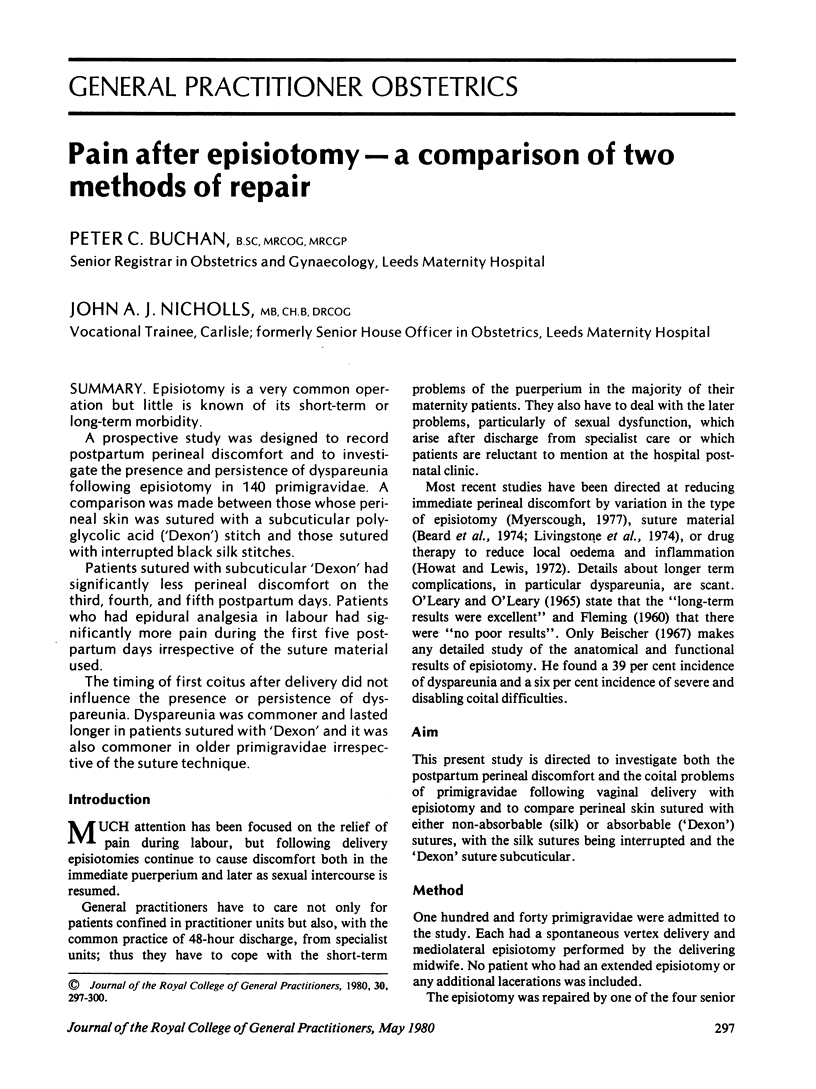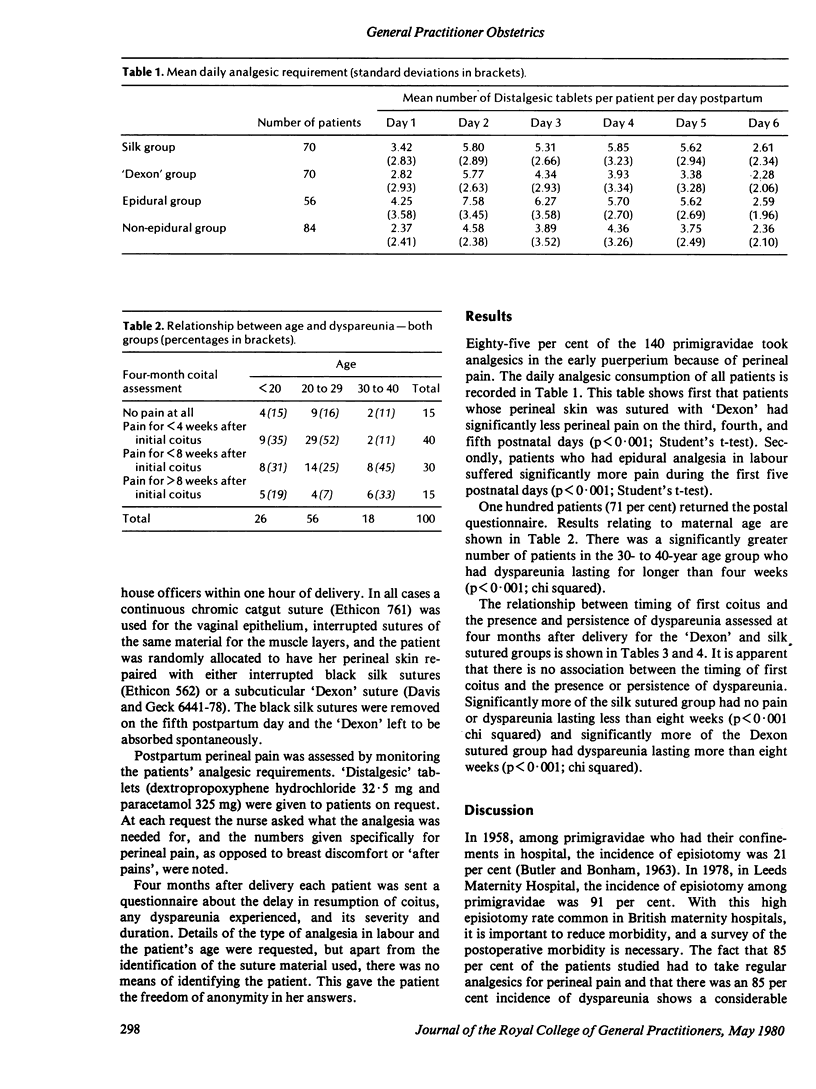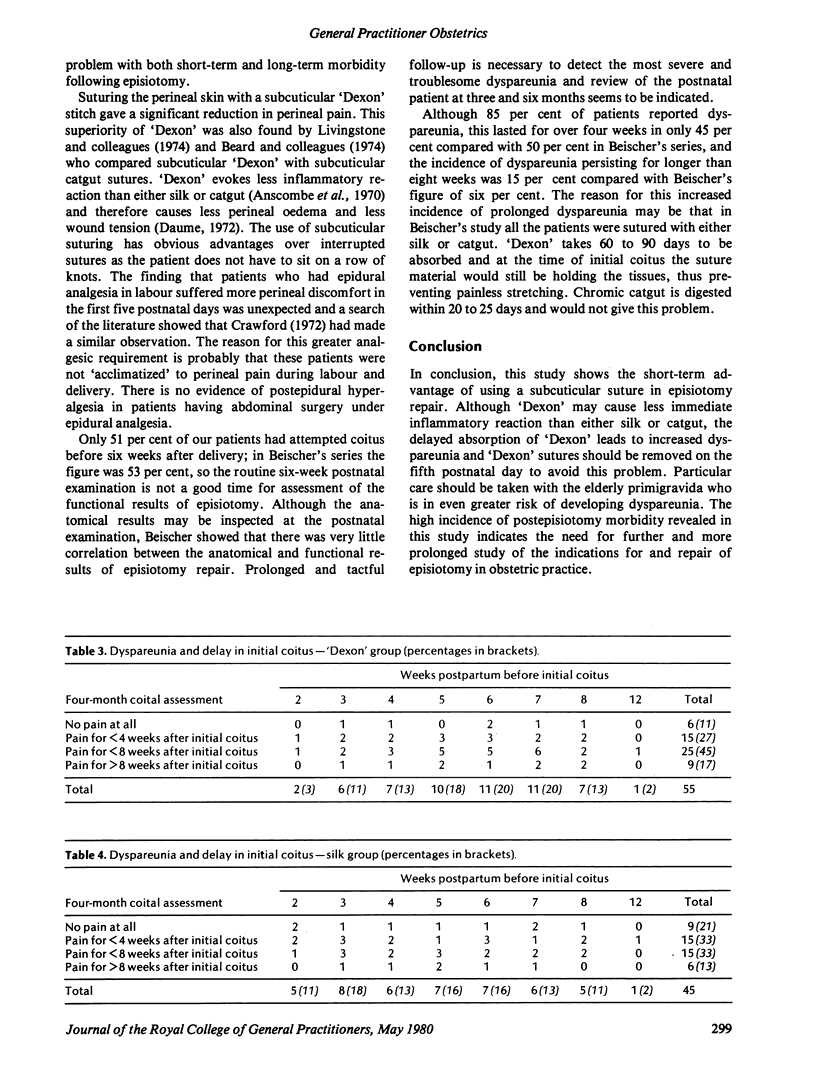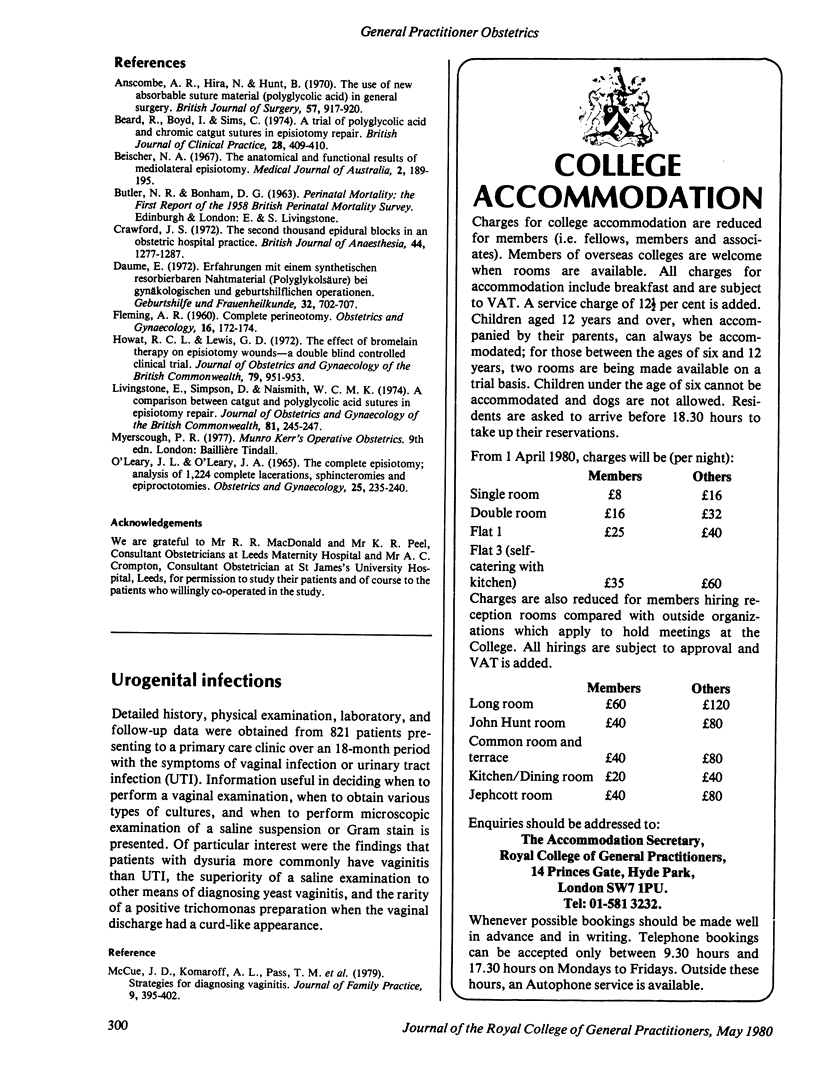Abstract
Episiotomy is a very common operation but little is known of its short-term or long-term morbidity.
A prospective study was designed to record postpartum perineal discomfort and to investigate the presence and persistence of dyspareunia following episiotomy in 140 primigravidae. A comparison was made between those whose perineal skin was sutured with a subcuticular polyglycolic acid (`Dexon') stitch and those sutured with interrupted black silk stitches.
Patients sutured with subcuticular `Dexon' had significantly less perineal discomfort on the third, fourth, and fifth postpartum days. Patients who had epidural analgesia in labour had significantly more pain during the first five postpartum days irrespective of the suture material used.
The timing of first coitus after delivery did not influence the presence or persistence of dyspareunia. Dyspareunia was commoner and lasted longer in patients sutured with `Dexon' and it was also commoner in older primigravidae irrespective of the suture technique.
Full text
PDF



Selected References
These references are in PubMed. This may not be the complete list of references from this article.
- Anscombe A. R., Hira N., Hunt B. The use of a new absorbable suture material (polyglycolic acid) in general surgery. Br J Surg. 1970 Dec;57(12):917–920. doi: 10.1002/bjs.1800571212. [DOI] [PubMed] [Google Scholar]
- Beard R., Boyd I., Sims C. A trial of polyglycolic acid and chromic catgut sutures in episiotomy repair. Br J Clin Pract. 1974 Dec;28(12):409–410. [PubMed] [Google Scholar]
- Beischer N. A. The anatomical and functional results of mediolateral episiotomy. Med J Aust. 1967 Jul 29;2(5):189–195. [PubMed] [Google Scholar]
- Crawford J. S. The second thousand epidural blocks in an obstetric hospital practice. Br J Anaesth. 1972 Dec;44(12):1277–1287. doi: 10.1093/bja/44.12.1277. [DOI] [PubMed] [Google Scholar]
- Daume E. Erfahrungen mit einem synthetischen resorbierbaren Nahtmaterial (Polyglykolsäure) bei gynäkologischen und geburtshilflichen Operationen. Geburtshilfe Frauenheilkd. 1972 Aug;32(8):702–707. [PubMed] [Google Scholar]
- FLEMING A. R. Complete perineotomy. Obstet Gynecol. 1960 Aug;16:172–174. [PubMed] [Google Scholar]
- Howat R. C., Lewis G. D. The effect of bromelain therapy on episiotomy wounds--a double blind controlled clinical trial. J Obstet Gynaecol Br Commonw. 1972 Oct;79(10):951–953. doi: 10.1111/j.1471-0528.1972.tb12194.x. [DOI] [PubMed] [Google Scholar]
- Livingstone E., Simpson D., Naismith W. C. A comparison between catgut and polyglycolic acid sutures in episiotomy repair. J Obstet Gynaecol Br Commonw. 1974 Mar;81(3):245–247. doi: 10.1111/j.1471-0528.1974.tb00453.x. [DOI] [PubMed] [Google Scholar]
- McCue J. D., Komaroff A. L., Pass T. M., Cohen A. B., Friedland G. Strategies for diagnosing vaginitis. J Fam Pract. 1979 Sep;9(3):395–402. [PubMed] [Google Scholar]
- O'LEARY J. L., O'LEARY J. A. THE COMPLETE EPISIOTOMY; ANALYSIS OF 1224 COMPLETE LACERATIONS, SPHINCTEROTOMIES, AND EPISIPROCTOTOMIES. Obstet Gynecol. 1965 Feb;25:235–240. [PubMed] [Google Scholar]


